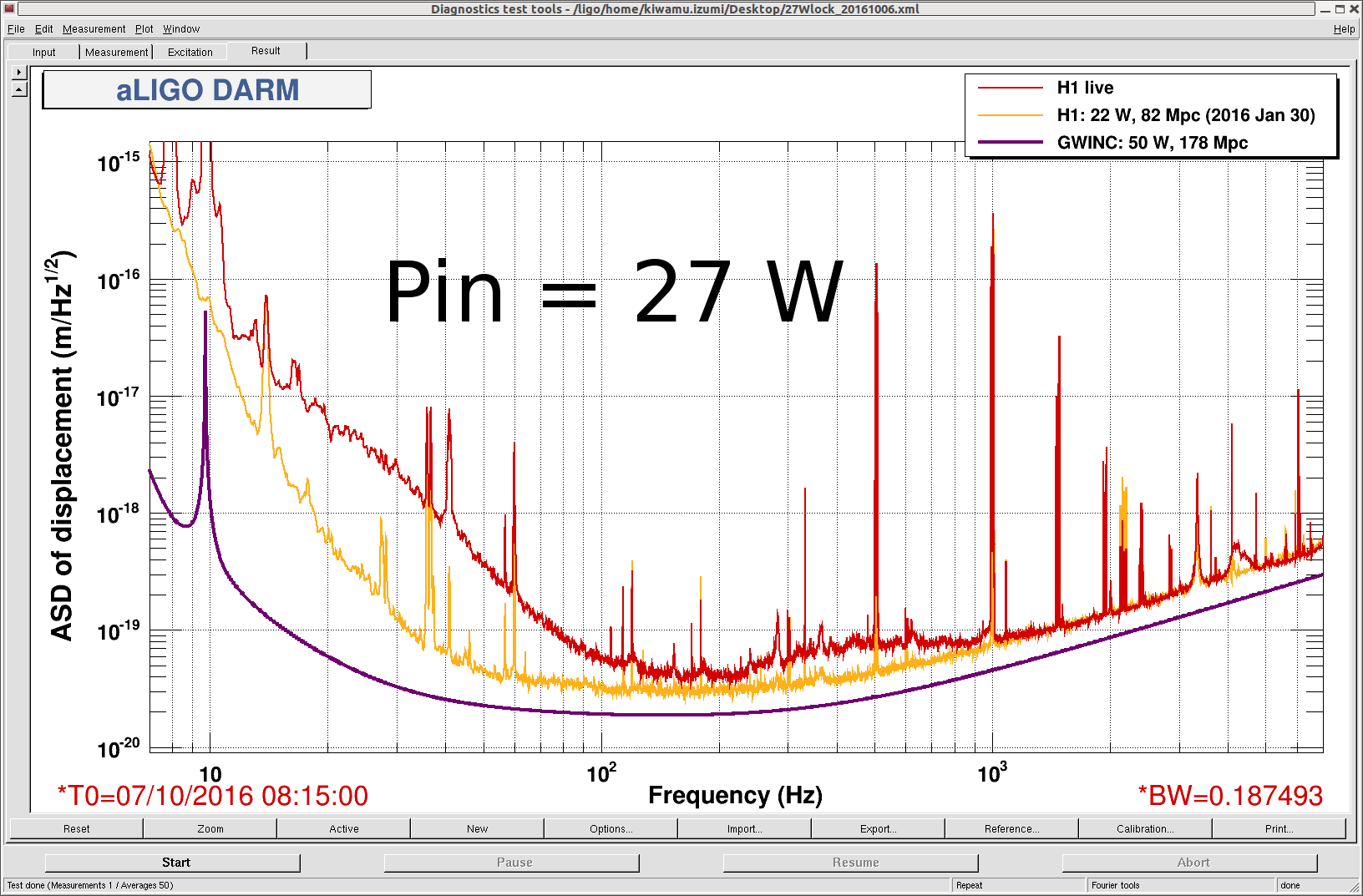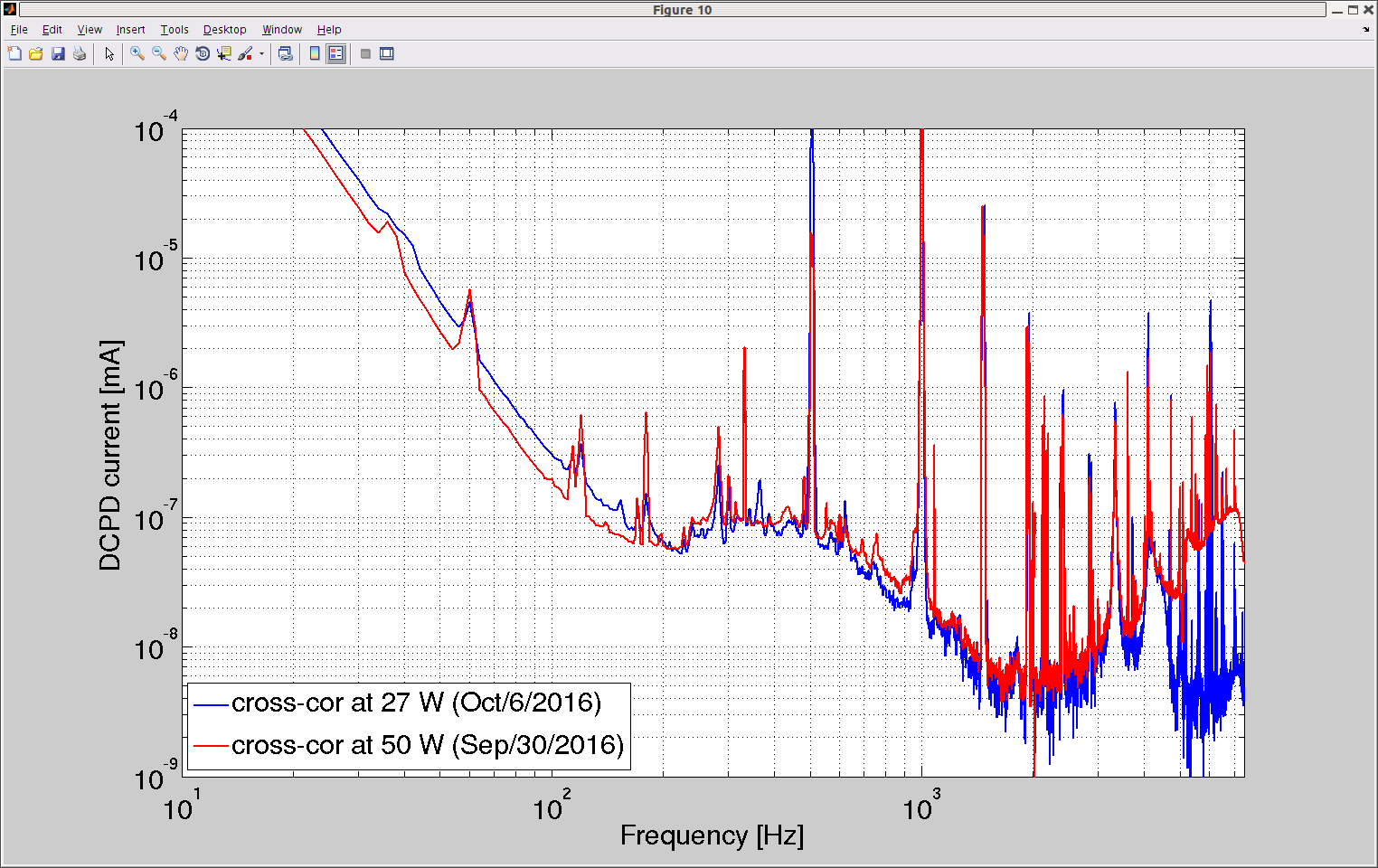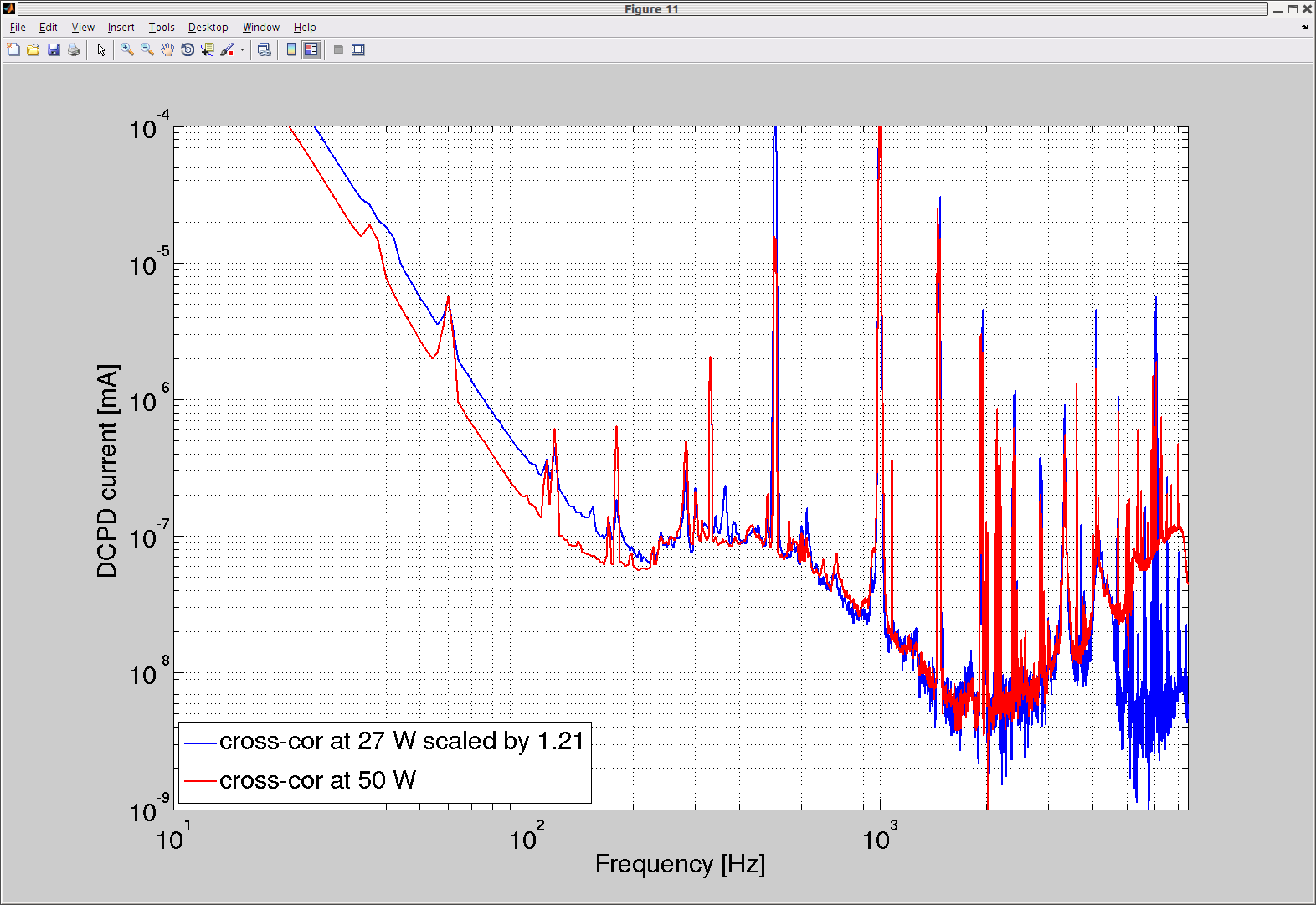There was only a short, not very good lock, after the DBB signal started to be acquired. I used ten minutes of data from GPS 1159862777 to compute the coherence between DARM (CAL-DELTAL) and the DBB QPD signals.
The first plot shows that the most coherent signal is Q1Y.
The second plot shows the transfer function from Q1Y (in arbitrary units, not sure about the calibration) to CAL-DELTAL (properly calibrated in meters, including the de-whitening filter). The shape is quite smooth, and it looks like a monothonic increase like f for most of the range. The low frequency noise of the IFO was quite bad, so I could only measure coherence above 100 Hz. Hopefully this will be improved in future locks.
However, I could fit the measured transfer function between Q1Y and CAL-DELTAL with a 3rd order model. The fit is shown in the third plot: the result is reasonably good.
I then converted the model into a IRR filter and computed the time-domain subtraction of the Q1Y signal from DARM. The result is quite good, most of the bump has disappeared, see the 4th plot for a comparison of the spectra and the 5th plot for the residual (basically null) coherence of the subtracted DARM with DBB signals.
Of course, we'll have to check in future locks how much this coupling changes over time and how hard it is to compensate for this change.
























